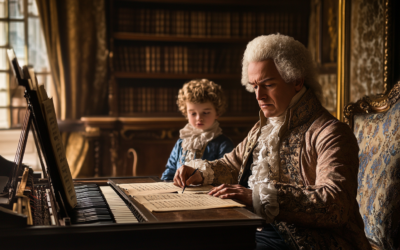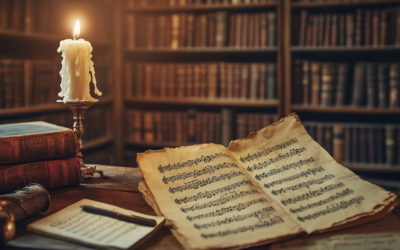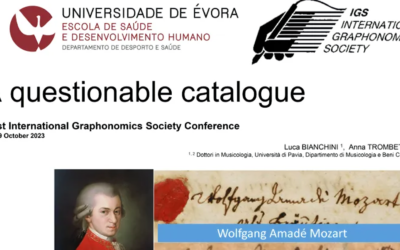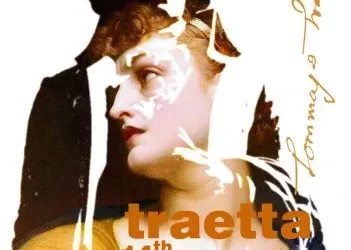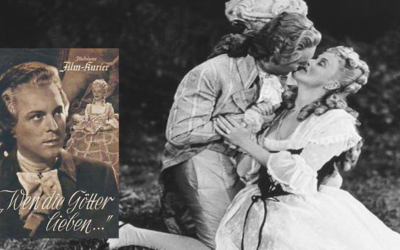Truth or Deception?
The Curious Case of Mozart’s "Lullaby"
Examining the murky history of “Schlafe mein Prinzchen, schlaf ein” and its questionable authorship
In the sprawling world of Mozartian myths, few tales have endured as long or as stubbornly as the origins of the lullaby Schlafe mein Prinzchen, schlaf ein (“Sleep, My Little Prince, Go to Sleep”).
For nearly two centuries, this piece has been attributed to Wolfgang Amadeus Mozart, despite enduring questions over its authenticity.
First published by Nissen, Constanze Mozart’s second husband, it was only in 1826 that he informed publisher André of the piece’s dubious provenance. While “experts,” Nissen claimed, deemed it worthy of Mozart, Mozart’s sister, Nannerl, held no memory of her brother writing such a tune.
Intriguingly, Constanze, usually vocal in promoting her husband’s legacy, made no public comment, though her personal diary reveals a hint. In a September 17, 1798 entry, she wrote of sending “another piece of Mozart’s in place of the lullaby” to Dr. Feuerstein. Did she suspect, even then, that Mozart may not have authored this work?
Mozart: The Fall of the Gods
This book compiles the results of our studies on 18th-century music and Mozart, who has been revered for over two centuries as a deity. We dismantle the baseless cult of Mozart and strip away the clichés that falsely present him as a natural genius, revealing the contradictions in conventional biographies. In this work, divided into two parts, we identify and critically analyze several contradictory points in the vast Mozart bibliography. Each of the nearly 2,000 citations is meticulously sourced, allowing readers to verify the findings. This critical biography of Mozart emerges from these premises, addressing the numerous doubts raised by researchers.
"Truth in music, as in history, requires more than wishful attribution."
Mozart: The Fall of the Gods
Constanze’s Unreliable Testament
Constanze Mozart remains a controversial source on matters of Mozart’s oeuvre. Could her diary entry imply her own doubts? Over time, the lullaby’s shaky origins gained traction, with figures like Johann Evangelist Engl, a prominent advocate of Mozart’s legacy, affirming the lullaby’s authenticity in the 1892 Annual Report of the Mozarteum. His stance solidified the piece in the Köchel catalogue as K.350. But musicologist Max Friedländer refuted this claim, proving that this celebrated lullaby was, in fact, the work of Bernhard Flies, a minor composer who published it in 1795. Later research revealed that even Flies had borrowed it from an earlier melody by Johann Friedrich Anton Fleischmann. Over time, Fleischmann’s lullaby became mistakenly attributed to Flies, then to Mozart—a confusion that would last over fifty years and persist, falsely, to this day.
An Ideological Battle for “Mozart’s” Lullaby
In 1944, as authenticity disputes resurfaced, German musicologist Herbert Gerigk, known for his involvement with Nazi-aligned musical publications, took a vehement stance. For Gerigk, Friedländer and Einstein’s work discrediting the lullaby’s Mozartian origins was not just a scholarly objection—it was an affront to Aryan cultural purity. Rather than acknowledging scholarly evidence, he painted Flies, Friedländer, and Einstein as scheming Jewish interlopers. “The German people desire this piece for Mozart,” he argued, sidestepping questions of authenticity in favor of ideology. The result was a chilling example of musical propaganda in service of the regime.
The Apocryphal Piece That Refuses to Die
Today, this questionable lullaby persists in Mozart’s name, nestled innocuously among beginner’s scores. My First Book of Mozart, arranged by David Dutkanicz, includes it as a legitimate Mozartian work, and the Mozart-Schaum Edition, aimed at young pianists, introduces it as “authentic.” Both editions acknowledge its contentious history only in modest footnotes, offering a single line to hint at the debate: “Most people believe this to be Mozart’s work, others say it is spurious.” But, one might ask, does this vague disclaimer suffice to remedy two centuries of mistaken identity?
You May Also Like
K.143: A Recitative and Aria in the Shadows of Doubt
K.143 is a prime example of how Mozart scholarship has turned uncertainty into myth. With no definitive evidence of authorship, date, or purpose, this uninspired recitative and aria in G major likely originated elsewhere. Is it time to admit this is not Mozart’s work at all?
The Enigma of Mozart’s Symphony K.73
The Symphony in C Major K.73 has long puzzled Mozart scholars. Touted as a youthful work of prodigious talent, its origins are murky at best. The title “Symphony,” inscribed on the first page of the autograph, is devoid of the composer’s name, casting immediate doubt on its attribution to Wolfgang Amadeus Mozart. Was this truly his work, or is the Symphony yet another victim of overzealous attribution?
Mozart’s Thematic Catalogue Exposed as a Forgery
A groundbreaking forensic analysis reveals that Mozart’s thematic catalogue, long thought to be his own work, is a posthumous forgery. This discovery, detailed in Mozart: The Construction of a Genius, turns centuries of Mozart scholarship on its head, demanding a re-examination of his legacy.
Bologna Connections
Quirino Gasparini’s rediscovered Mitridate aria takes centre stage in Bern and Basel, shedding light on Mozart’s reliance on this forgotten composer.
International Traetta Award
We are thrilled to announce that the 14th International Traetta Award has been bestowed upon Anna Trombetta and Luca Bianchini. This prestigious recognition honours their outstanding dedication to musicological research on primary sources of the European musical repertoire, offering significant contributions to reshaping the historiography of 18th-century music.
A Legacy Rewritten by the Shadows of History
Mozart’s image, often regarded as a universal symbol of musical genius, was heavily manipulated by the Nazi regime, a fact largely ignored in post-war efforts to “denazify” German culture. From propaganda-driven films to anti-Semitic narratives, Mozart’s legacy is far more complex and troubling than we are often led to believe.


